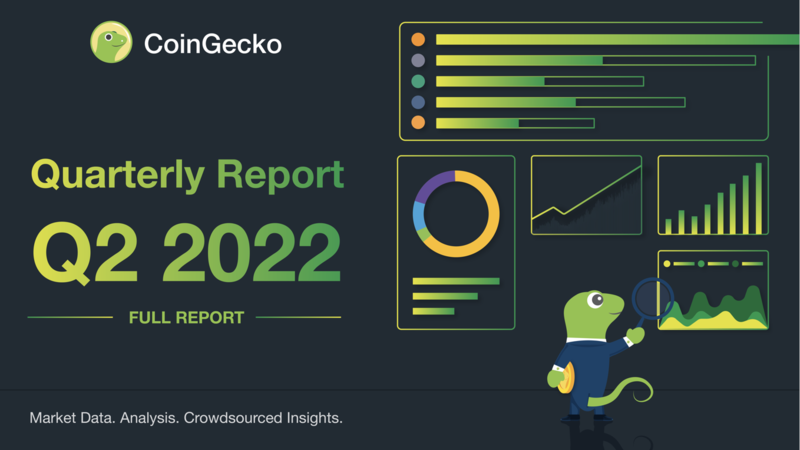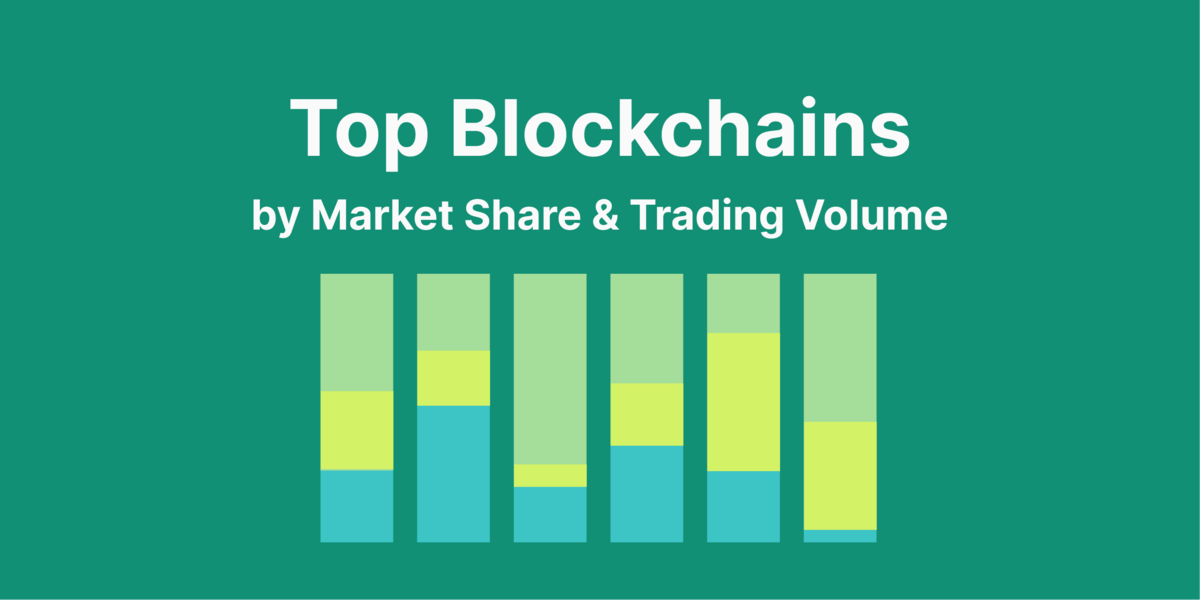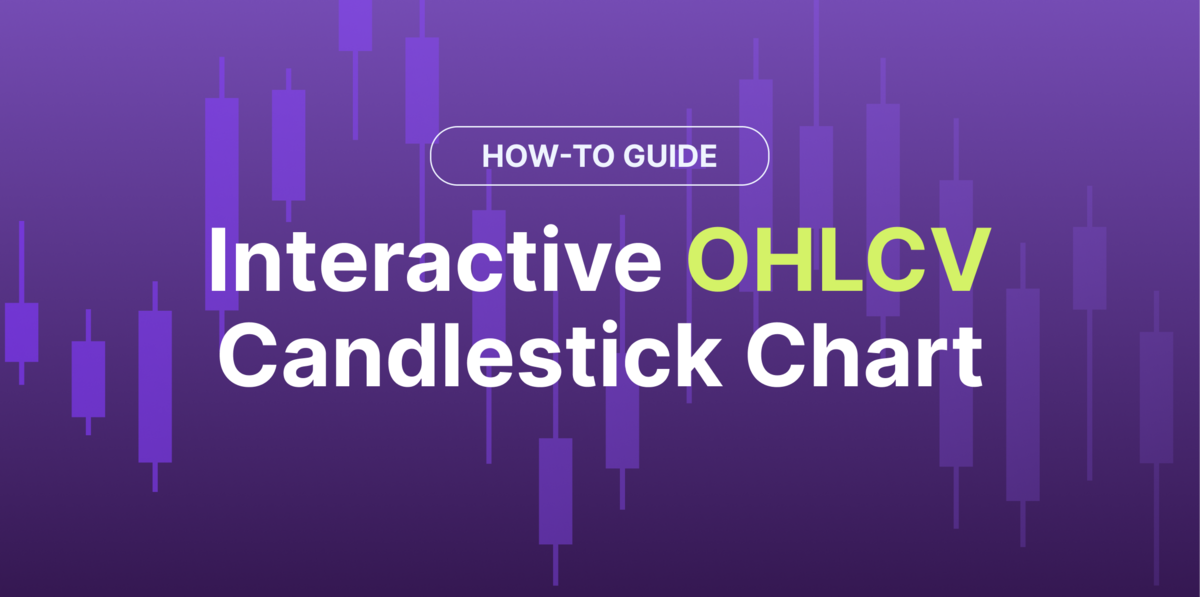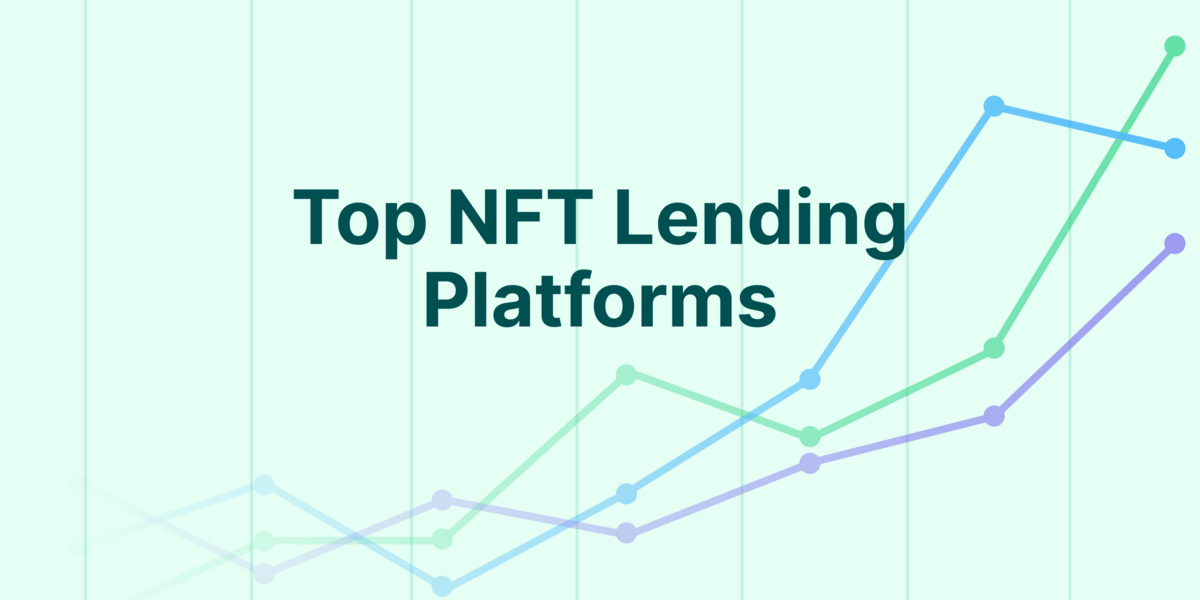
Hey Geckos!
The pain continues as Q2 2022 was filled with many unfortunate events in the crypto space. The top 30 coins have lost over half their market cap since the previous quarter, as the total market cap now sits at approximately 900 billion towards the end of June. While prices have gone down by a fair bit, spot trading volumes have remained relatively stable at around $100 billion daily.
Here are our Top 7 Q2 2022 crypto highlights:
1. Terra-ble quarter for stablecoins
The Top 15 stablecoins lost almost a fifth of their market cap, or -$33.9B in absolute terms.
Before its ultimate downfall which wiped out ~$18B in market cap, USTC overtook BUSD as the third-largest stablecoin.
Tether retained its lead, though its share decreased by almost 20%. USDC took the lead in Q2 in terms of growth with close to a 7% increase.
In contrast, FRAX and DAI however saw losses of 48% and 32% in market cap respectively, possibly due to a negative association with algorithmic stables.
The slight decrease (discounting USTC) in stablecoin market share suggests that a certain amount of capital has completely exited the crypto ecosystem, in contrast to last quarter when investors likely de-risked into stables amidst market uncertainty.
2. Terra's fallout and bETH contagion

With Terra's collapse, users were bridging their bETH back to mainnet and converting them to ETH via Curve. At the same time, large LPs such as Celsius, 3AC and Amber also withdrew liquidity from the pool.
Total circulating stETH is now ~4.2M, representing ~30% of all staked ETH and ~3.5% of total ETH circ supply.
The stETH-ETH Curve pool, is now down to $718M in TVL, compared to its peak of $5.6B on April 5.
Important to note that stETH is not meant to be 1:1 to ETH. stETH to ETH redemption will only be unlocked post-Merge, and users are taking on smart contract risk when staking ETH on Lido.
3. There were further domino effects on Three Arrows Capital, who is now facing liquidation

A large group of various investors had invested in Three Arrows Capital, who, unfortunately, were also victims of Terra’s demise.
Some of these investments have come from centralized entities such as BlockFi and Voyager, which sustained heavy losses. On June 22, Voyager disclosed that it had ~$650M in exposure to 3AC. This is ~58% of its loan book and is mostly unsecured.
Due to third-order effects, DeFi protocols such as Maple Finance were not spared as some users’ funds were lent to Orthogonal Trading, which in turn had gone to Babel Finance, one of 3AC’s creditors.
4. DeFi’s dominance continued eroding as markets trended lower
DeFi market cap suffered a hefty drop, decreasing from $142 billion to $36 billion in a span of 3 months, along with the rest of the crypto market.
Much of the DeFi market cap was wiped out largely due to the collapse of Terra and its stablecoin, UST. Terra ecosystem projects were wiped out, alongside protocols that supported these assets.
Notably, the panic spread towards other stablecoins, leading to mass redemptions of USDT and other algo-stablecoins depegging.
Besides that, DeFi exploits have ramped up in Q2, affecting projects such as Inverse and Rari. These attacks have negatively impacted token prices as investors lose faith in these hacked protocols.
5. As Terra implodes, old and new contenders arise to take its spot
In Q2 2022, Ethereum regained some of its TVL dominance, as altchains started to shrink. While Ethereum has increased its share of TVL from 54% to 60%, its overall TVL is still 52% lower compared to Q1 2022.
Avalanche, Polygon, and Solana have maintained their respective TVL shares, albeit in line with the overall market downturn.
Although Tron's TVL has reduced from $4.8B to $3.9B, Tron’s TVL share has tripled from 2% to 6%, largely due to the launch of its algo-stablecoin, USDD.
The collapse of UST and LUNA in May saw Terra’s TVL shrink to just 5%. By the end of June, there was just over $21M left on the network. The new Terra 2.0 network has even less than that, at $13M TVL.
6. OpenSea’s dominance slips in shrinking market as competitors gain grounds

OpenSea successfully retained its teetering hold over the top position.
However, in May and June, Magic Eden and X2Y2 seemed to have caught up, taking turns to overtake OpenSea’s daily and even weekly volume.
OpenSea’s integration of Solana seemed to have “backfired”, opening up the floodgates for Solana NFTs, but one that ended up benefitting Magic Eden more.
The NFT market pie may have shrunk but Magic Eden was getting a much bigger share of it by the end of Q2 (32%).
Similar to LooksRare in Q1, X2Y2 rose rapidly as traders capitalized on its rebate and incentive program with wash trades – without which would put its volume at around LooksRare’s level.
7. Monthly trading volume for Q2 2022 was averaging below $100B

Top 10 DEXs recorded a total of $274.0 billion in spot trading volume in Q2 2022, giving a monthly average of $92B. Compare this with Q1 2022 which saw a total of $446B and a monthly average of $149B.
Combined across all chains, Uniswap is still the dominant DEX with ~60% market share.
However, Curve recorded the largest quarterly growth (383%), likely because of both the (collapsed) USTC pools and the flight to stablecoins in the bear.
Noticeably, DEXs on Solana (i.e. Jupiter and Serum) and BNB (i.e. Dodo and PancakeSwap) have either increased or maintained their relative market share, signifying real market activity on chains outside Ethereum.
Get the full scoop: CoinGecko's Q2 2022 Cryptocurrency Report
Want to deep dive further? You'll find our complete Q2 2022 Cryptocurrency Quarterly Report below.
Like what you see? Sign up for our newsletter for daily crypto updates!

CoinGecko's editorial team comprises writers, editors, research analysts and cryptocurrency industry experts. We produce and update our articles regularly to provide the most complete, accurate and helpful information on all things cryptocurrencies. Follow the author on Twitter @coingecko








 Or check it out in the app stores
Or check it out in the app stores
